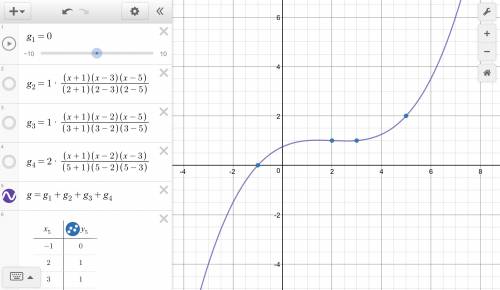
Mathematics, 27.07.2019 23:30 erin5678
Use lagrange interpolation to find a polynomial that passes through the points. (a) (0, 1), (2, 3), (3, 0) (b) (−1, 0), (2, 1), (3, 1), (5, 2)

Answers: 1
Another question on Mathematics

Mathematics, 21.06.2019 16:20
Which mathematical statements are true? 1) if 3 is an odd number, then 3 times 3 is an even number. 2) if 6 is less than 7, then 4 is greater than 7. 3) six is divisible by 3, and 10 is a multiple of 2. 4) the average of the data is greater than the largest value in the data, or it’s less than the largest value in the data. 5) the slope of a linear graph is its rate of change, and the graph’s y-intercept is the initial value. 6) if an equilateral triangle has equal angles, then all its angles will measure 45°.
Answers: 3

Mathematics, 21.06.2019 21:30
Find the domain and range of the following function f(x) = 51x - 21+ 4
Answers: 2


Mathematics, 21.06.2019 22:00
22. catie is starting a babysitting business. she spent $26 to make signs to advertise. she charges an initial fee of $5 and then $3 for each hour of service. write and solve an inequality to find the number of hours she will have to babysit to make a profit. interpret the solution.!
Answers: 1
You know the right answer?
Use lagrange interpolation to find a polynomial that passes through the points. (a) (0, 1), (2, 3),...
Questions











Mathematics, 01.07.2020 16:01

















